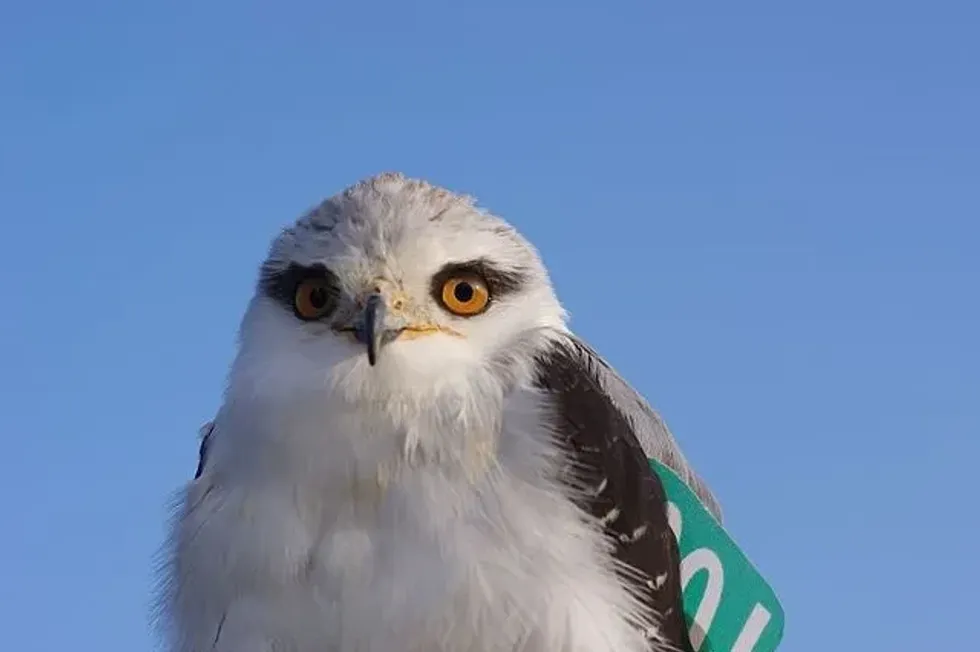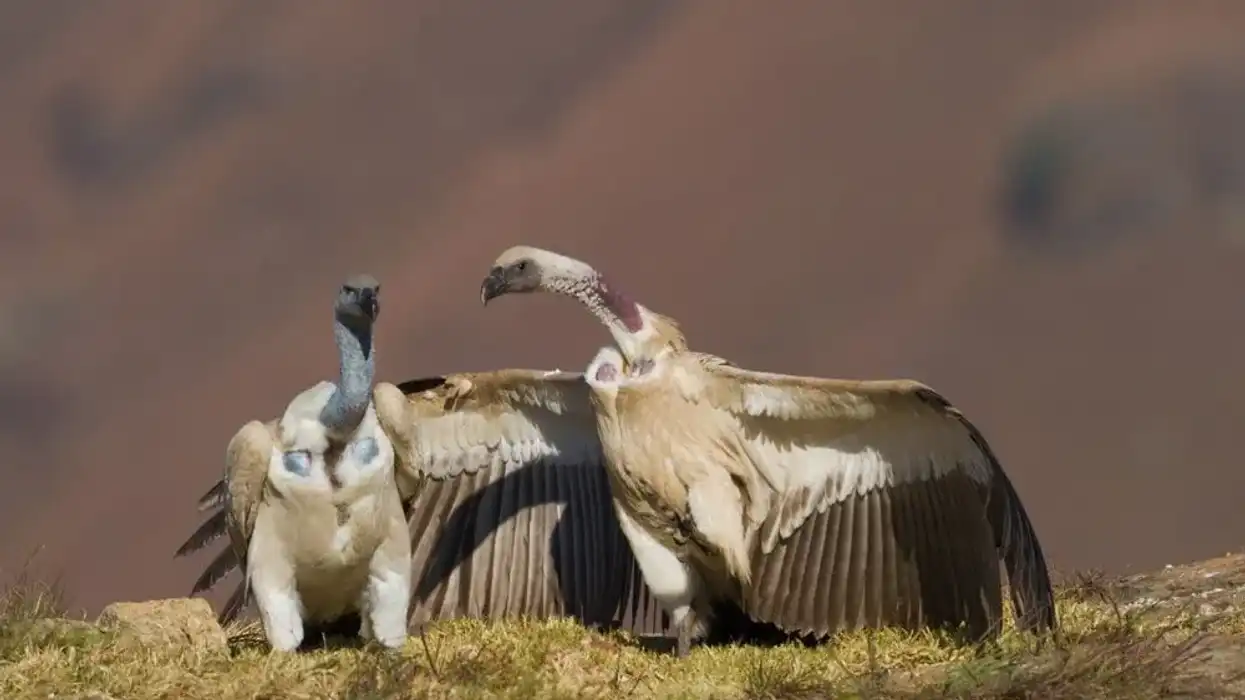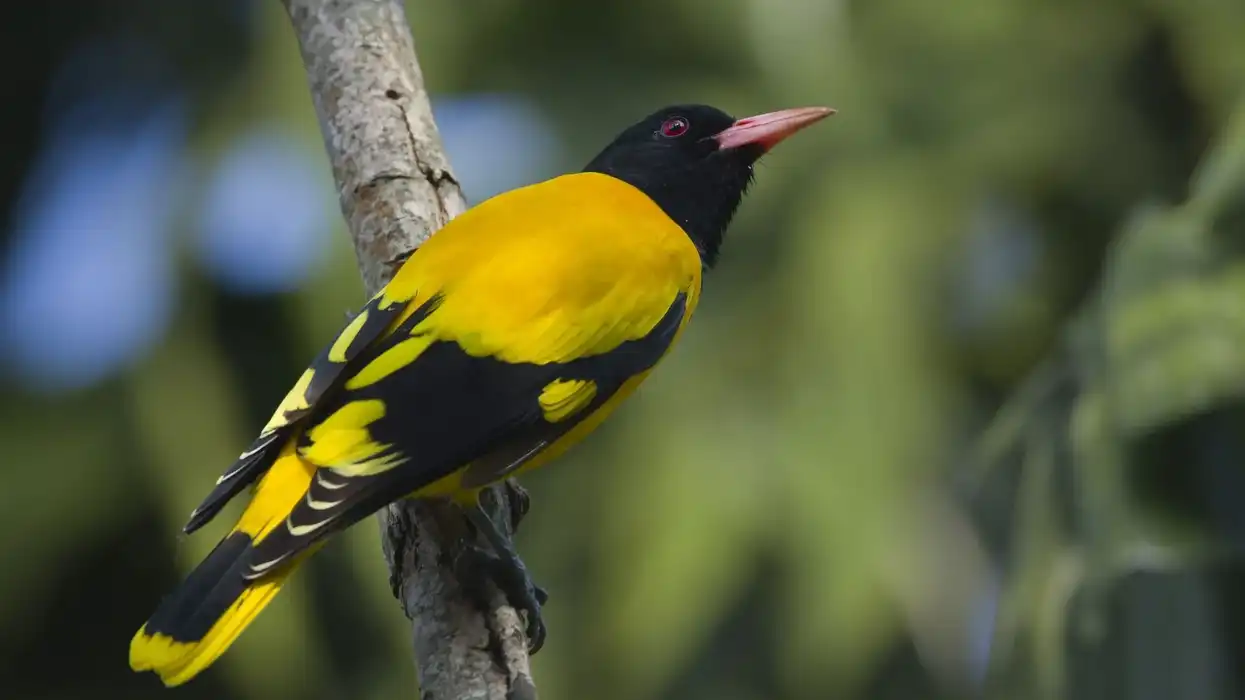The black-shouldered kite (Elanus axillaris), also known as Australian black-shouldered kites, belongs to the Accipitridae family that consists of several birds of prey.
These birds are known for their distinctive black shoulders and are often seen hovering with their wings held upright in the early morning and late afternoon, particularly in open grassland searching for prey like a mouse or a rabbit.
They are often mistaken for other similar species like the black-winged kite and the letter-winged kite and it can be tough to distinguish between these birds.
Their only distinctive features are the distinctive black comma shape which is seen above and behind the eye and the black shoulder patches they have.
Black-shouldered kites are small raptors that are native to Australia and they are one of many kite species that can be found in the world. They are common throughout the Australian mainland. Their habitat range is large due to them being found all across Australia; they can be found from coastal areas to sand dunes!
Black-shouldered kites are monogamous in nature and will create pairs during the breeding season. These graceful birds are important to the Australian ecosystem as they help to keep the rodent population down as rodents are a large part of their diets!
For more relatable content, check out these swallow-tailed kite facts and palm warbler facts for kids.
Black-Shouldered Kite Interesting Facts
What type of animal is a black-shouldered kite?
Black-shouldered kites are birds of prey that belong to the kite family of birds.
What class of animal does a black-shouldered kite belong to?
This black-wing bird belongs to the Aves class of animals. The Aves class consists solely of birds and this bird belongs to the family of Ardeidae.
How many black-shouldered kites are there in the world?
The population count of the black-shouldered kite species is estimated to be around 100,000 individuals. Much of the population of these birds is divided into small patches as they are migratory in nature. They can also be found in Chile, Argentina, Texas, China, and Taiwan, alongside their native Australia.
There are less than 10,000 breeding pairs that can be found in China with another 100 breeding pairs occurring in Taiwan. Since these birds do not have too many natural predators, their population keeps increasing with more young birds adding to the current population.
Where does a black-shouldered kite live?
Black-shouldered kites are endemic to Australia. These birds of prey are commonly found in the southwestern wheat belt of Australia, mostly in agricultural areas.
They are residents of coastal areas that have a higher rainfall and they can be found in small patches in drier parts of their native Australia. They can sometimes also be found in northern Tasmania and the Bass Strait.
What is a black-shouldered kite's habitat?
Since the black-shoulder kite occurs throughout Australia, their habitat is vast and they can be found in tropical and temperate regions. These birds are often found hovering with their wings held upright over open grasslands, agricultural lands, wetter savannas, and open woodlands with tall grass.
They can also be found near coasts, farms, roadsides, and wastelands. Black-shouldered kites are often seen in flight over coastal dunes that have dense covers as they hunt for mice and small rodents before dropping down and grabbing prey.
Who do black-shouldered kites live with?
The black-shoulder kite is a species of birds that hunts alone or in pairs. In a habitat where food resources are plentiful, these birds are often seen in small groups of families with young birds and adults.
These families are often big and may consist of at least 60 individuals that hunt during the day and roost communally at night. This large number of birds also feeds together during mouse plagues.
However, in cases when there is a scarcity of food, these birds show territorial behavior and practice 'tail flicking', a show of territorial display. They can also be seen together in large numbers during the breeding season.
How long does a black-shouldered kite live?
The black-shouldered kite has an estimated lifespan of around six years in its native habitat of Australia. Not much is known about their lifespan in captivity.
How do they reproduce?
The black-shoulder kite species forms monogamous pairs during the breeding season. Not much is known about their age of sexual maturity.
During the mating ritual, females are fed by males in mid-air as they take food from the feet of the male. In some cases, they interlock their talons and will tumble downwards, releasing each other just before hitting the ground. Constant calls are made during these courtship displays.
After mating, both the male and the female will partake in making nests that are made up of sticks. These nests are untidy and shallow in nature. After the nest has been made, the female will lay two to five oval-shaped eggs which have an incubation period of 30 days.
What is their conservation status?
Currently, the IUCN Red List has these species on the Least Concern list as they are found in abundance in their native Australia due to a lack of natural predators and an abundance of food sources.
Black-Shouldered Kite Fun Facts
What do black-shouldered kites look like?
Black-shouldered kites are mostly pale gray above as their upper parts, crown, and neck are pale gray and they have a white head.
The black-comma-shaped marking over and behind the eye with a black orbital ring and a black underwing is used to differentiate them from other similar species, such as the black-winged kite. The legs and feet of these birds are yellow or golden-yellow and they have sharp talons with three of them facing the front and one facing back.
This helps them in grabbing prey on the move.
How cute are they?
The black-shouldered kite is one of the cutest birds. Their amazing tail and black shoulders with black wing tips and their bright reddish-orange eyes make these birds an absolute treat to the eyes of avid birdwatchers!
How do they communicate?
Black-shouldered kites are silent birds usually, but they become loud during the mating season and their calls are persistent in nature. They make a whistled sound in the form of loud 'chee chee' noises, and when perched, they make a hoarse wheezing sound.
Females and juveniles use a harsh call and mothers use a soft croak like a frog to communicate with their young.
How big is a black-shouldered kite?
A black-shouldered kite is a small raptor that grows up to 13.8-15 in (35-38 cm) tall and has a wingspan of 31.5-39.4 in (80-100 cm). Females are larger than males and they are bigger than a common kingfisher.
How fast can a black-shouldered kite fly?
Not much is known about the speed at which these kites fly. However, a black-shouldered kite in flight is a treat to watch! These birds (in flight and while hovering) keep their wings upright in a V-shape before dropping down and breaking their flight to grab prey.
How much does a black-shouldered kite weigh?
An adult black-shouldered kite will weigh 8.8-10.6 oz (250-300 g) when fully grown.
What are their male and female names of the species?
No specific name has been assigned to either the male or the female kite.
What would you call a baby black-shouldered kite?
A baby black-shouldered kite, much like other bird babies, is called a chick. Chicks are taken care of by the female for a period of at least 36 days.
After the 36 days as a fledgling is over, the parents will feed the chick for another 22 days before they are ready for flight in about five weeks' time. Juveniles, like adults, are gray too and have a white head with a rusty brown nape with a darker streak.
What do they eat?
Black-shouldered kites are carnivorous in nature like gray hawks with mice and other small rodents making up a large part of their diet. They also prey on birds, lizards, rabbits, rats, and grasshoppers.
Are they poisonous?
No, they are not poisonous.
Would they make a good pet?
No, these kites are predatory animals and they have not been domesticated in Australia or in any other parts of the world that they migrate to. Since these are wild birds, it is often illegal to keep them in captivity.
Did you know...
In Australia, black-shouldered kites are often confused with the letter-winged kite as both these birds hunt during the day and are almost similar in looks. However, they can be distinguished from each other as the latter has black markings under its wings which the wings of black-shouldered kites lack.
In southwestern parts of Australia, these birds are commonly seen as they hover over areas with high sheep and rabbit numbers and feed off mice and other small rodents found in grain farms.
The population of these birds depends on the frequency of mouse plagues in the region. They can gather in large numbers in areas prone to mouse plagues and they will reside there until they are done feeding.
Black-shouldered kites are nomadic in nature and they are always hovering, in-flight, and on the move for prey.
Juvenile black-shouldered kites retain their juvenile plumage for a season after which it will rapidly molt. A juvenile black-shouldered kite feather is a truly beautiful site!
Are black-shouldered kites endangered?
No, these kites are listed as a Least Concern species on the IUCN Red List, meaning that their population is stable and they are by no means endangered.
Do black-shouldered kites migrate?
Yes, this bird shows migratory behavior on a small scale as it migrates to other regions. Some of the places that they are found in a small population are China, Taiwan, Argentina, Texas, and Chile.
Here at Kidadl, we have carefully created lots of interesting family-friendly animal facts for everyone to discover! Learn more about some other birds from our griffon vulture interesting facts and Amazon parrot surprising facts pages.
You can even occupy yourself at home by coloring in one of our free printable black shouldered kite coloring pages.









